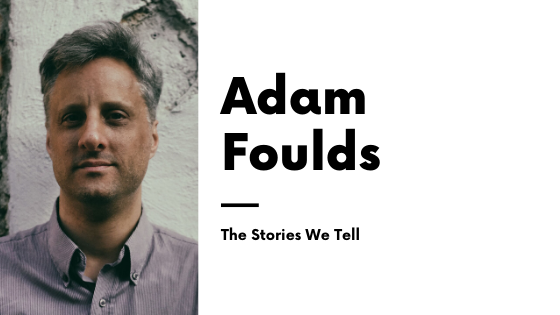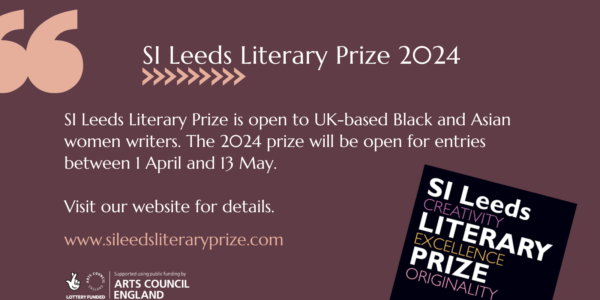The Stories We Tell
19 Mar 2020 / The Stories We Tell

The Haunted Library
The inspiration to write historical fiction arrives with a strange and wonderful sensation. A subject that you know something about – the Levellers of the seventeenth century, for example, or the life of Thomas Cromwell – catches the light of the present moment and feels suddenly luminous and insistent. It remains shining in your mind, commanding your attention. This is exciting, of course. There’s the thrill of contact with a past that refuses to stay in the past, and there is a particular sense of commission for the writer. Here is a story that wants to be told. Connections and possibilities appear and proliferate.
But there is also a particular anxiety of responsibility that doesn’t arise when you are inventing things out of thin air, so to speak: the need to get things right. There are deliberately transgressive ways of treating historical material, of course, in montage and pastiche and the like; I’m talking here about the kind of fiction that wants to honour the material with as much accuracy as possible, to avoid falsifying what is being described. When writing about things necessarily outside your immediate experience, there is an effort that has to be made to master the material so that it can become part of your own imaginative world. What is unfamiliar has to become so familiar that it acquires all the depth and richness of things you know first-hand and can speak about with freedom and confidence. And so the research begins.
Research falls broadly into two categories, field trips and study. The travel part of the research feels like a deeply enjoyable and unusually noble form of tourism as you visit the sites where the events you’re concerned with took place. Knowledgeably, you survey the world in front of you and discern, invisible beneath it, the lineaments of the world as it was in the past. There is a tantalising sense of proximity. You can almost see your characters moving in front of you. But this can be deceptive. You need to take care.
When I was preparing to write my novel The Quickening Maze, one of the places I needed to visit was Epping Forest, or rather revisit. It was a place I already knew well. Having grown up at its edge was one reason I felt compelled to write about the period around 1840, when the poets John Clare and Alfred Tennyson crossed paths there, in and around a private mental asylum where Clare and Tennyson’s younger brother, Septimus, were patients. My familiarity with the forest was, however, misleading.
From my reading, I learned that I should not be imagining my cast of real and imagined characters in the place as I knew it. The forest seemed ancient, natural and unchanging but had in fact looked very different a hundred-and-seventy-years earlier. It had been coppiced and worked by charcoal burners – hence the road name Colliers Row – and had not been the tall, dense, shadowy wood that I knew. The coppicing kept the trees shorter, lighter, and more open. Here there was difference where I wasn’t expecting it. How easy it is to fall into errors of assumption when envisioning the past. The thought of making such mistakes is enough to make a novelist’s heart race in panic. Places are wonderful for their sensory immersion and the inner séance the writer can conduct when visiting – here they actually were – but it is the other kind of research, conducted in libraries and archives, which allows you to proceed with a reasonable confidence that you are not dropping anachronisms unwittingly into your story.
For most writers, a visit to a good library is an almost voluptuous pleasure: the enveloping calm, the categorical order, the wood, the lamps, the silence, the inaudible hum of the words in their volumes. When you’re there for research, however, it can take on a more perilous, uncertain quality. First of all, there is the vertiginous feeling that comes with realising just how much there is to know. And it’s not just the obvious, important things, the names and events that fall into the category of history as learned in school. To create a believable world, a thorough understanding of what academics call ‘material culture’ is required.
What did people wear? What did they eat? How did they travel? What did their homes look like? And so you find yourself reading about the history of fashion and cuisine and, if possible, visiting museums where you can view, say, Victorian clothes, as I did at the Victoria and Albert Museum, or reconstructed homes. It is this deep background research that allows you to imagine yourself into the bodies of your characters, the flavours of mutton or hot gin in their mouths, the feel of cambric against the skin or the constriction of a laced corset, and the varying experience of temperature and light in a home before central heating and electricity.
You also quickly realise that you need to learn about how people spoke. We know how quickly language changes in our own lifetimes as we encounter fresh, incomprehensible slang among people younger than us and read of the annual additions to the dictionary – ‘selfie’, ‘Brexit’, ‘fake news’ and so on. We may also note the cutting edge of obscenity and swearing losing its sharpness: TV light entertainment is now full of language that would have made our grandparents sweat with embarrassment. One of the easiest errors to make in historical fiction would be to have anyone before the twentieth century greeting someone with ‘hello’. Fortunately, there are linguists and lexicographers who can tell us that this use of ‘hello’ emerged with the widespread use of the telephone. If your characters lived before the telephone they would say ‘good day’ or ‘well met’ or any of a number of other phrases.
Language encodes all of our attitudes and assumptions, of course. Salient among them for a novelist may well be the phrases we use to discuss another person’s character. That vocabulary changes constantly, from talk of bodily humours – ‘sanguine’ or ‘phlegmatic’, for example, or the religious language of virtues and sins — to our rapidly changing psychotherapeutic language. I came across a striking example of the latter the other day when I read that a fellow student of Sylvia Plath at Smith College disparaged her as ‘phoney’ with ‘a split personality’. That language couldn’t be more redolent of the fifties. The same criticism today might take the form of calling her a ‘narcissist’ and a ‘fake’.
Linguistic, social and material history, then, for starters. After that, there is all the stuff that you know you have to learn about. In the case of The Quickening Maze that included, among other things, the history of psychiatry, of furniture manufacture, of British gypsies, of the Sandemanian church, and the lives and voluminous works of John Clare and Alfred Tennyson. This sounds, and is, onerous but there is a hidden advantage to the research process that is unavailable to those writing directly from imagination: all the time that your conscious mind is busy with the information gathering, the creative subconscious will be at work in the background slowly forming the pattern of the novel. Here, for example, is a brief moment in The Quickening Maze borne of several layers of research:
‘Look at that,’ Matthew Allen said to his son. ‘Marvellous.’ He bent forward with his hands on his knees, peering.
‘It’s a Maudsley,’ Thomas Rawnsley told him.
‘Oh, I know, I know. I’ve studied all the designs. It’s simply that I haven’t really seen a table engine working before.’
The hypnosis of its movement, silent, balanced, rhythmical. The viscous thrusting of its arms, well oiled. And the turning of the triangular centrifugal governor at the top, back and forth, like a girl hearing her name and turning towards him, saying Yes? Yes? Yes?
‘This type of engine,’ Rawnsley said, ‘would probably suit your purposes as well as mine. I use charcoal which is of course abundant here with the forest.’
First, there was my reading in industrial history which taught me what kind of engine an up-to-date small factory or workshop at the time would use. This was followed by a visit to the Science Museum in London, which has some excellent Victorian engineering exhibits. There I could watch a similar engine in action so I could describe it accurately. And now that I reread this passage, I see where my subconscious was at work with the character of Dr Allen as he set about his scheme for the mechanical carving of wood. As he observes the machine, we see a covert connection in his mind with an idea of control in ‘hypnosis’. Appearing too in the image of the girl is the sexual fantasy of young women’s interest that is somewhere alive in many male fantasies of success. The intention is for all of these things to work together, alloyed in the single material of the scene in its place in the novel. The historical information should not be disconnected and redundant but animated in the dramatic life of the characters.
That said, I do not love the process of research. It comes also with a rickety sense of uncertainty because it’s always possible that you will learn something on the next page of the volume you’re reading that disallows your idea – a journey that couldn’t be made in that time, a discovery that hadn’t been made for another twenty years or the like. And I do not love historical information for its own sake. I always thought it important to write as if what I was describing was not historical, to treat it as a present reality and to take for granted what the characters do about their world and thereby make it seem as solid, as given, as our own.
There is no obvious effort in Charles Dickens’s Our Mutual Friend to convince you that the novel is set around 1864. It simply is. Although it is not a historical fiction – it was published in 1864-65 – we historical novelists may do well to imitate the confident insouciance on the matter in Dickens’s opening line: ‘In these times of ours, though concerning the exact year there is no need to be precise, a boat of dirty and disreputable appearance, with two figures in it, floated on the Thames, between Southwark bridge which is of iron, and London Bridge which is of stone, as an autumn evening was closing in.’
Much research is there to be forgotten in the act of writing. The best historical fiction is preoccupied with its characters and drama rather than its period details. Penelope Fitzgerald’s work is a very instructive example here. Take a look at The Blue Flower or The Beginning of Spring and their spry, economical, forthright style. No, the point of research for me has always been to build a solid, richly felt world and then to write within it in what Henry James called the ‘irresponsible, plastic way’, shaping what one has learned indistinguishably from what one has experienced and invented. That’s the ideal, true to the original inspiration; a visitation of the past which seems alive and speaks urgently, lyrically, tenderly, to our present.
This effort of understanding and imaginative response is worth making for some because historical fiction can be a powerfully liberating form of writing. As the late George Steiner wrote, ‘It is not the literal past that rules us, save, possibly, in a biological sense. It is images of the past. These are often as highly structured and selective as myths.’ The historical fiction writer can change those images by revealing what was hidden or showing it in a new light.
Take E. L. Doctorow’s Ragtime as an example, a novel set between 1902 and 1912, and published in 1972. Its story of Coalhouse Walker, an African-American musician who has his new Model T Ford destroyed by racist firemen is a painful examination of the refusal of large parts of American society at the time to treat black men and women with the dignity they deserved. This vandalism is one of innumerable racist acts recovered, as it were, from historical amnesia. It forms a new image in the mind of the novel’s readers – I know I haven’t forgotten that trashed beautiful car and the smirking faces of the perpetrators. It is an image that, who knows, may help guide a society towards something more like justice and equality. This is an idealistic hope, of course, but Steiner’s point remains: we are pushed around by our images of history. Historical fiction may join in doing some of the work necessary to change these images and free us of our wrong persuasions in the still redeemable present. This may well be why we fiction writers hear history calling to us in the first place.
But finally, no such political justification is really necessary for choosing to write historical fiction. Art makes its own interest. What compels the imagination cannot be controlled, and history is fascinating for itself, whatever it can tell us about now. Let’s give the last word here to the great historical fiction author of our age, Hilary Mantel: ‘When I am writing about the 16th century, I actually am writing about it.’
Find out more about The Stories We Tell.
 Adam Foulds is a poet and novelist from London, England, now resident in Toronto. He has been the recipient of a number of literary awards, including the Sunday Times Young Writer Of The Year, the Costa Poetry Prize, the Somerset Maugham Award, the South Bank Show Prize for Literature, the E. M. Forster Award, the Encore Award, and the European Union Prize For Literature. His 2009 novel, The Quickening Maze, was shortlisted for the Man Booker Prize. He was made a Fellow of the Royal Society of Literature in 2010. He was named as one of Granta’s Best of Young British Novelists in 2013 and of the Poetry Book Society’s Next Generation Poets in 2014. His latest novel, Dream Sequence, was published early in 2019.
Adam Foulds is a poet and novelist from London, England, now resident in Toronto. He has been the recipient of a number of literary awards, including the Sunday Times Young Writer Of The Year, the Costa Poetry Prize, the Somerset Maugham Award, the South Bank Show Prize for Literature, the E. M. Forster Award, the Encore Award, and the European Union Prize For Literature. His 2009 novel, The Quickening Maze, was shortlisted for the Man Booker Prize. He was made a Fellow of the Royal Society of Literature in 2010. He was named as one of Granta’s Best of Young British Novelists in 2013 and of the Poetry Book Society’s Next Generation Poets in 2014. His latest novel, Dream Sequence, was published early in 2019.



